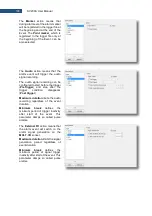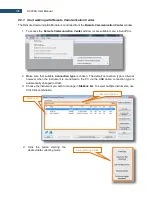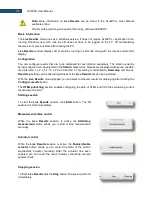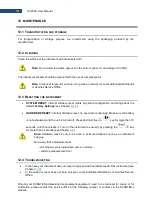
117
SV 200A User Manual
10 NOISE SOURCE DIRECTION DETERMINATION
The noise source direction determination algorithm applied in SV 200A is based on the phase shift of
the signals between the individual microphones of the system (4 x MEMS microphones) placed around
the case of SV 200A. Its main idea is to detect the source of the dominant energy in a given time interval.
Detection occurs in two planes - horizontal "XY" and vertical "Z". The user receives information about
the direction of the noise source with the dominant energy along with the percentage of that energy in
the whole signal and the distribution of total energy as a function of the angle.
The module is designed to detect sources at a minimum distance of 2 m. The user should also install
the device so that the reflecting surfaces (nearby objects) are in the greatest distances.
SV 200A records into the logger file acoustic energy distribution for the
“
XY
” and “
Z
” planes with the
Logger Step
.
Energy
in a given direction is expressed in % of the total energy in all directions.
Direction
is the angle of the deviation:
•
for “XY” plane - from the north direction clockwise in the range from 0 to 359 degrees;
•
for “Z” plane - from the vertical direction in the range from 0 to 180 degrees (top = 0 degrees,
bottom = 180 degrees).
You can observe logger results with directional characteristics and also map with the SV 200A
localization and direction of the noise or its distribution in + by clicking on appropriate buttons:
Logger results
and
Map
.
The direction or distribution of the noise on the map corresponds to the time of the cursor position on
the
Logger results
screen.
















































